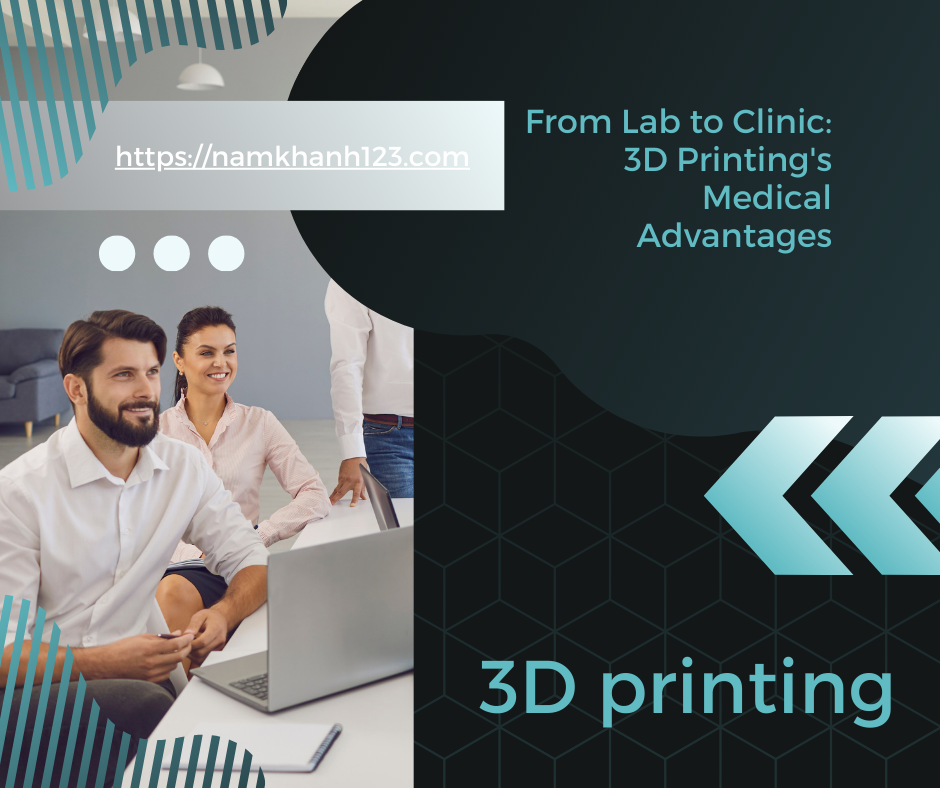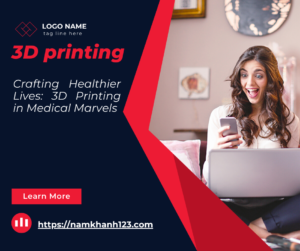Introduction: The intersection of technology and healthcare has ushered in an era of groundbreaking innovations. One such innovation that has rapidly gained prominence in recent years is 3D printing. From crafting intricate prototypes in labs to revolutionizing clinical procedures, 3D printing has opened new doors in the field of medicine. In this article, we will delve into the remarkable advantages of 3D printing in the medical world, showcasing its potential to transform patient care and improve outcomes.
- Customized Prosthetics and Implants: One of the most remarkable applications of 3D printing in healthcare is the creation of customized prosthetics and implants. Traditional manufacturing methods often struggle to meet the unique anatomical needs of patients. However, 3D printing allows for the production of personalized implants and prosthetics tailored to each patient’s specific requirements. This not only enhances comfort but also improves the overall quality of life for individuals with limb loss or in need of implants.
- Precision Surgical Guides: Surgery requires utmost precision, and 3D printing plays a crucial role in ensuring it. Surgeons can now access 3D-printed surgical guides that provide them with an accurate map of a patient’s anatomy. This enables surgeons to plan procedures with unprecedented accuracy, reducing the risk of errors and complications. As a result, patients experience faster recovery times and better surgical outcomes.
- Medical Models for Education: In medical education, 3D printing has proven to be an invaluable tool. Medical schools and training programs can create anatomical models that closely mimic human organs and structures. This hands-on approach enhances the learning experience for students, allowing them to practice procedures and understand complex anatomical structures in a realistic manner.
- Rapid Prototyping and Research: 3D printing accelerates the research and development process for medical devices and equipment. Researchers can quickly prototype new devices and test their functionality, leading to faster innovation and improved healthcare technologies. This is particularly important in addressing emerging health challenges and pandemics, where timely solutions are crucial.
- Patient-Specific Pharmaceuticals: The pharmaceutical industry is also benefiting from 3D printing technology. Personalized medicine is on the rise, and 3D printing allows for the creation of patient-specific drug formulations. This ensures that patients receive the right dosage and combination of medications, increasing the effectiveness of treatments while minimizing side effects.
- Dental Applications: Dentistry has embraced 3D printing for a wide range of applications, including creating dental implants, crowns, and orthodontic devices. The precision and customization offered by 3D printing have revolutionized the dental industry, making procedures more comfortable and efficient for patients.
- Biofabrication and Tissue Engineering: In recent years, 3D printing has made significant strides in the field of biofabrication and tissue engineering. Scientists are now exploring the possibility of printing living tissues and organs. This groundbreaking development has the potential to address the shortage of donor organs and revolutionize transplantation procedures. Researchers are already making progress in creating functional tissues such as skin, cartilage, and even small-scale organs, opening up new avenues for regenerative medicine.
- Reducing Medical Costs: Beyond its clinical advantages, 3D printing also has the potential to reduce healthcare costs. Customized medical devices and implants can minimize the need for costly revisions or replacements, ultimately saving both patients and healthcare systems significant expenses. Additionally, by streamlining the design and manufacturing process, 3D printing can help make medical innovations more accessible and affordable.
- Telemedicine and Remote Printing: The rise of telemedicine has been further augmented by 3D printing technology. Patients in remote or underserved areas can now benefit from the expertise of specialists located elsewhere. Medical professionals can send digital files of 3D-printed devices or models to these areas, where local 3D printers can create them. This approach ensures that patients receive the same level of care and access to advanced medical solutions, regardless of their geographical location.
- Regulatory and Ethical Considerations: While 3D printing’s medical advantages are undeniable, it also presents unique challenges. Regulatory bodies and healthcare institutions must establish guidelines and standards for the safe and ethical use of 3D printing in healthcare. Ensuring the quality and safety of 3D-printed medical products is paramount to maintaining patient trust and safety.


